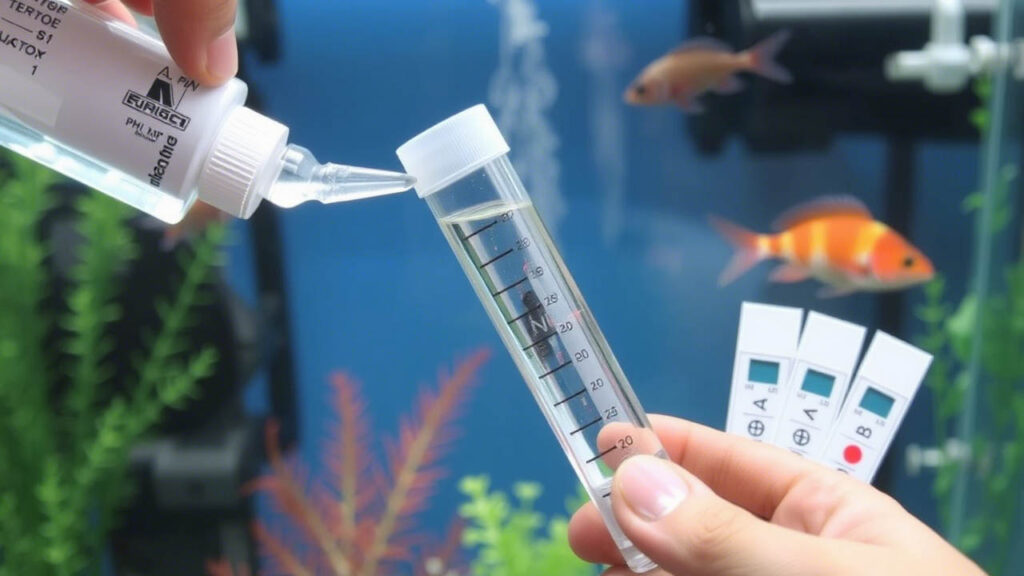Physical Address
304 North Cardinal St.
Dorchester Center, MA 02124
Physical Address
304 North Cardinal St.
Dorchester Center, MA 02124

Maintaining proper water chemistry is one of the most crucial aspects of successful aquarium keeping. Among the various water parameters, pH level stands out as particularly important for the health and well-being of your aquatic pets. Many fish species have evolved in specific pH environments, and deviations from their preferred ranges can cause stress, illness, and even death. Understanding how to decrease pH in aquarium settings is essential knowledge for every hobbyist, especially those keeping species that thrive in slightly acidic conditions. Whether you’re experiencing unexpectedly high pH readings or deliberately creating a specialized biotope for acid-loving species, this guide will walk you through safe, effective methods to lower your aquarium’s pH levels while maintaining a stable, healthy environment for your fish.
pH is a measure of how acidic or alkaline (basic) water is, measured on a scale from 0 to 14. A pH of 7 is considered neutral, below 7 is acidic, and above 7 is alkaline. This scale is logarithmic, meaning that each full point represents a tenfold change in acidity—pH 6 is ten times more acidic than pH 7, and pH 5 is a hundred times more acidic than pH 7.
Different fish species have evolved in different pH environments:
When pH levels are too high for your particular fish species, several problems can occur:
Learning how to decrease pH in aquarium water properly is critical for maintaining fish health, especially when keeping species from naturally acidic environments like blackwater streams in South America or Southeast Asia.
Before attempting to lower your aquarium’s pH, it’s important to understand what might be causing elevated levels in the first place:
1. Tap Water Source Most municipal water supplies add alkaline substances like calcium carbonate to neutralize acidity in pipes. This often results in tap water with pH between 7.5 and 8.5—considerably higher than what many tropical fish need.
2. Hardscape Materials Certain decorative items can raise pH levels:
3. Water Treatment Products Some aquarium treatments and medications can alter pH, often increasing it as a side effect.
4. Poor Maintenance Infrequent water changes and filter cleaning allow organic waste to accumulate, which can eventually lead to pH fluctuations.
5. High CO₂ Loss Heavy aeration or surface agitation can release dissolved CO₂ from the water, which tends to raise pH in poorly buffered systems.

Natural methods are generally preferable for lowering aquarium pH as they work gradually and often provide secondary benefits:
1. Driftwood Adding driftwood to your aquarium is one of the most popular ways to decrease pH naturally:
Before adding driftwood, soak it in a separate container for 1-2 weeks, changing the water regularly to remove excess tannins that might discolor your aquarium water too much.
2. Indian Almond Leaves (Catappa Leaves) These leaves have been used for centuries in Southeast Asian fish keeping:
Use 1-2 medium leaves per 10 gallons of water, replacing them every few weeks as they decompose.
3. Peat Moss Peat moss is highly effective at lowering pH in aquarium water:
Be sure to use natural, chemical-free peat specifically sold for aquarium use rather than horticultural peat with additives.
4. Botanicals Various seed pods, cones, and other plant materials can help decrease pH:
These not only help lower pH but also create microhabitats and visual interest.
When natural methods aren’t sufficient or quick enough, chemical approaches can be considered:
1. pH-Lowering Solutions Commercial products specifically designed to lower aquarium pH:
2. Reverse Osmosis (RO) Water RO systems remove minerals and impurities from water:
3. Carbon Dioxide (CO₂) Injection For planted aquariums, CO₂ injection not only benefits plants but naturally lowers pH:
4. Acid Buffer Products Commercial buffering products help decrease pH in aquarium water while stabilizing it at the new level:
After taking steps to decrease pH in your aquarium, consistent monitoring becomes essential:
1. Regular Testing
2. Gradual Changes
3. Consistent Water Change Schedule
4. Buffer Capacity Awareness
When learning how to decrease pH in aquarium environments, avoid these common pitfalls:
1. Drastic, Rapid Changes
2. Ignoring Water Hardness
3. Overreliance on Chemicals
4. Neglecting Biological Impact
Understanding how to decrease pH in aquarium settings is a valuable skill for any fish keeper, particularly those working with species that require slightly acidic conditions. The key to success lies in making gradual, well-monitored changes while addressing the root causes of elevated pH rather than simply treating symptoms. Natural methods like adding driftwood, botanical elements, or peat moss offer safe, sustainable approaches that mimic the natural environments many fish species evolved in.
Remember that stability is more important than achieving a “perfect” pH number. Fish can adapt to slightly suboptimal conditions, but they struggle with frequent fluctuations. By testing regularly, making small adjustments, and maintaining consistent care routines, you’ll create a stable, healthy environment where your aquatic pets can thrive.
Whether you’re creating a specialized biotope for blackwater species or simply managing the effects of alkaline tap water, these techniques for how to decrease pH in aquarium settings will help you maintain optimal conditions for your underwater community.